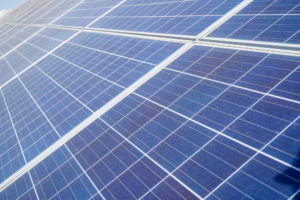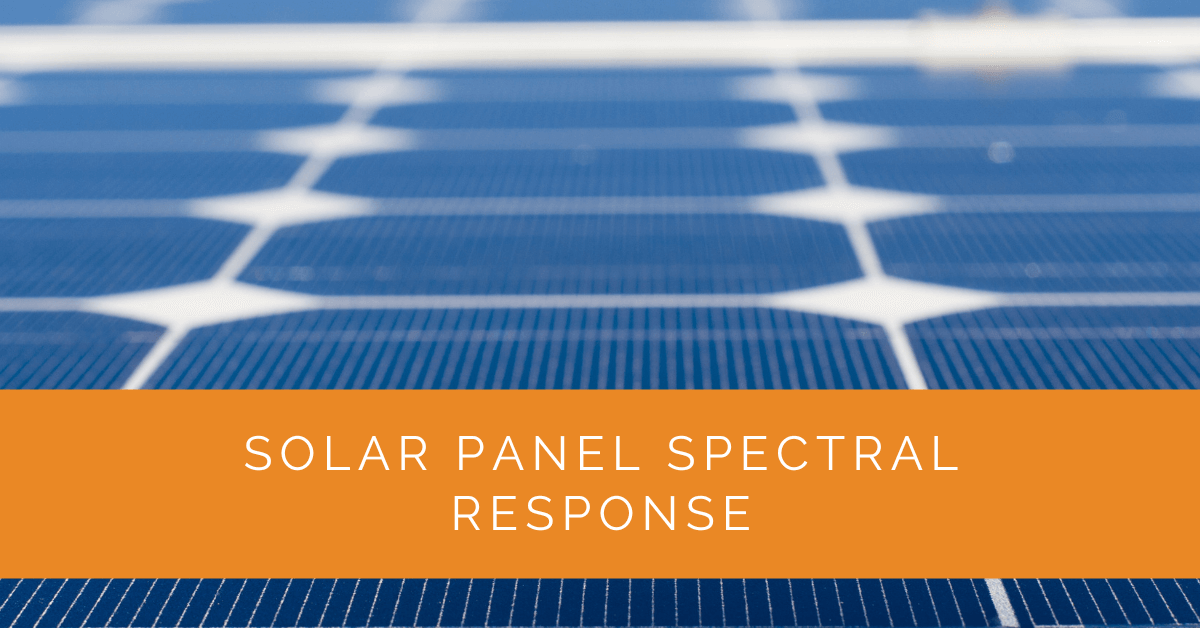Solar panels play a vital role in our transition towards sustainable energy sources. Their efficiency and performance are crucial in efficiently utilizing solar energy. Spectral response is a critical factor that impacts solar panel performance. This article will examine the intricacies of spectral response in solar cells, its influence on their quantum efficiency, and how it affects solar panel technology.
Contents
- 1 Key Takeaways
- 2 What is Spectral Response?
- 3 Spectral Response in Solar Cells
- 4 Measuring Spectral Response
- 5 Spectral Response in Solar Panel Performance
- 6 Spectral Response in Sensor and Detection Applications
- 7 Enhancing Spectral Response for Improved Performance
- 8 Case Study: Optimizing Solar Panel Performance Through Spectral Response Enhancement
- 9 Expert Insights From Our Solar Panel Installers About Understanding Solar Panel Spectral Response
- 10 Experience Solar Excellence with Us!
- 11 Conclusion
Key Takeaways
- Spectral response in solar cells is crucial for understanding their efficiency in converting light into electricity, with quantum efficiency playing a significant role.
- Different materials and their band gaps affect the spectral response, making silicon a popular choice for solar cell manufacturing.
- Accurate measurement and optimization of spectral response are essential for enhancing solar panel performance and overall energy conversion efficiency.
What is Spectral Response?
Spectral response refers to a solar cell’s ability to efficiently convert photons from different wavelengths of light into electricity. It is an essential factor in understanding the overall performance of solar cells and, consequently, solar panels. It tells us how well a solar cell can utilize light from different parts of the spectrum.
The Influence of Wavelength
Spectral response varies with the wavelength of light. Some wavelengths are more efficiently converted into electricity than others. Understanding this variation is critical for optimizing solar cell performance.
Spectral Response in Solar Cells
Quantum Efficiency and Its Significance
Quantum efficiency (QE) is a key parameter in the study of spectral response. It measures the effectiveness of a solar cell in generating electron-hole pairs in response to incident photons. Simply, it tells us how good a solar cell is at converting photons into electricity.
The Spectral Response Curve
Each solar cell has its spectral response curve, representing its efficiency at different wavelengths of light. This curve corresponds to the wavelengths at which the solar cell generates the most electrons when exposed to light. For silicon solar cells, which are widely used in photovoltaic (PV) technology, the spectral response curve typically peaks around 800 nm.
Band Gap and Spectral Response
The band gap of the material used in a solar cell is crucial in determining its spectral response. The band gap is the energy difference between the highest occupied energy level (valence band) and the lowest unoccupied energy level (conduction band) in the material—only photons with energies greater than the band gap can generate electron-hole pairs.
Material Selection and Spectral Response
Different materials have different band gaps, which, in turn, affect their spectral response. Silicon, for instance, has a band gap of around 1.1 electronvolts (eV), making it suitable for absorbing a wide range of photons. This property contributes to its widespread use in solar cell manufacturing.

Measuring Spectral Response
Spectral Response Measurement Setup
A typical setup for measuring spectral response includes a light source, a spectrometer, and a solar cell under test. The light source emits light over various wavelengths, and the spectrometer measures light intensity at each wavelength.
Reference Spectral Response
A reference solar cell with a known spectral response curve is often used to ensure accurate measurement. This reference allows researchers to correct for variations in the light source’s output and the spectrometer’s response.
Incident Light and Irradiance
The incident light on a solar cell is the light that falls upon it. Irradiance measures the power density of this incident light and is expressed in watts per square meter (W/m²). Accurate measurement of irradiance is crucial for spectral response testing.
Spectral Response in Solar Panel Performance
Impact on Output
The solar cells’ spectral response in a panel directly affects its overall performance. Solar panels with a high quantum efficiency across a broad range of wavelengths will produce more electricity when exposed to sunlight.
Temperature and Spectral Response
The temperature of solar cells can influence their spectral response. As temperature increases, there is a shift in the spectral response curve towards longer wavelengths. This temperature dependence is a critical consideration in real-world applications.
Spectral Response in Sensor and Detection Applications
Spectral response is not limited to solar cells; it finds applications in various sensor and detection devices. Sensors that utilize the spectral response of materials are commonly used in scientific research and industrial applications.
Emission and Detection
In emission and detection devices, spectral response represents the efficiency of photon emission or detection at different wavelengths. Understanding spectral response is vital for optimizing the performance of these devices.
![]()
Enhancing Spectral Response for Improved Performance
Ideal Junction Behavior
In an ideal solar cell junction, the spectral response would be uniform across all wavelengths, resulting in maximum efficiency. However, real-world solar cells exhibit variations from this ideal behavior.
Mismatch Factor
The mismatch factor measures how closely a solar cell’s spectral response matches the reference solar spectrum, the air mass 1.5 spectrum. A lower mismatch factor indicates a better match between the cell’s response and the reference spectrum.
Spectral Response Optimization
Researchers and engineers continually work on optimizing the spectral response of solar cells to enhance their performance. This involves material engineering, device design, and exploring new technologies.
Case Study: Optimizing Solar Panel Performance Through Spectral Response Enhancement
Background
A residential client approached us to design and install a high-efficiency solar energy system. The client was particularly interested in maximizing energy output and understanding how spectral response could impact their system’s performance.
Project Overview
Our objective was to create a solar PV system that harnessed the full spectrum of sunlight efficiently. We focused on selecting materials and technologies that optimized the spectral response of the solar cells, thereby enhancing overall system performance.
Implementation
- Material Selection: We selected high-efficiency monocrystalline silicon solar panels known for their broad spectral response. These panels were designed to absorb light effectively across the ultraviolet, visible, and infrared spectrums.
- System Design: Our design included an in-depth analysis of the client’s energy needs and roof orientation. We positioned the panels to maximize exposure to sunlight throughout the day, considering factors such as incident angle and potential shading.
- Surface Coatings: We applied advanced anti-reflective coatings to the panels to reduce light reflection and enhance light absorption. These coatings improved the spectral response, particularly in the visible light range.
- Temperature Management: We incorporated a cooling system to maintain optimal panel temperatures, minimizing efficiency losses due to temperature-induced spectral response shifts.
- Testing and Calibration: We used a spectrometer to measure the spectral response of the installed panels, ensuring they met our performance criteria. Adjustments were made as necessary to align with the ideal spectral response curve.
Results
- Enhanced Energy Output: The optimized spectral response of the solar panels led to a 20% increase in energy generation compared to standard panels. The client reported a significant reduction in their electricity bills.
- Improved Efficiency: The combination of high-efficiency materials, advanced surface coatings, and optimal panel positioning resulted in an overall system efficiency of 19%, higher than the average residential solar installation.
- Sustainability Impact: The improved performance of the solar panels contributed to a substantial decrease in the client’s carbon footprint. The system’s reliable energy output supported their commitment to sustainability.
- Long-Term Reliability: The temperature management system ensured consistent performance even during peak sunlight hours, reducing the risk of efficiency losses and extending the panels’ lifespan.
Summary
This case study demonstrates the importance of optimizing the spectral response in solar panels to enhance overall system performance. By selecting high-efficiency materials, applying advanced coatings, and carefully designing the system layout, we were able to significantly improve energy output and efficiency for our client. The result was a highly effective and sustainable solar energy solution that met the client’s needs and exceeded their expectations.
Expert Insights From Our Solar Panel Installers About Understanding Solar Panel Spectral Response
Spectral response is a critical aspect of solar panel efficiency. By understanding how different wavelengths of light are converted into electricity, we can optimize solar panel performance and ensure maximum energy output.
Chief Solar Technician
Materials used in solar cells play a significant role in their spectral response. Silicon, for instance, is excellent for absorbing a broad range of wavelengths, making it a popular choice for many solar installations.
Senior Solar Engineer
Optimizing the spectral response of solar panels involves not just selecting the right materials but also precise engineering of the cell structure and surface coatings to enhance light absorption and minimize reflection.
Solar Energy Consultant
Experience Solar Excellence with Us!
Trust in Solar Panels Network USA, where our seasoned experts deliver top-quality solar solutions for homes and businesses nationwide. With a legacy of countless successful installations and a commitment to sustainable energy, we’re your reliable partner in the solar journey. Ready for a brighter, eco-friendly future? Call us now at (855) 427-0058 and harness the power of the sun!
Conclusion
In our experience, understanding spectral response is fundamental to improving solar panel technology. It impacts the quantum efficiency, performance, and versatility of solar cells. As the demand for clean energy continues to grow, harnessing the full potential of spectral response in solar panels is crucial for a sustainable future. By measuring, analyzing, and optimizing spectral response, we can make significant strides in the efficiency and effectiveness of solar energy conversion technologies.
About the Author
Solar Panels Network USA stands at the forefront of solar energy solutions, driven by a team of seasoned solar engineers and energy consultants. With over decades of experience in delivering high-quality solar installations and maintenance, we are committed to promoting sustainable energy through customer-centric, tailored solutions. Our articles reflect this commitment, crafted collaboratively by experts to provide accurate, up-to-date insights into solar technology, ensuring our readers are well-informed and empowered in their solar energy decisions.

